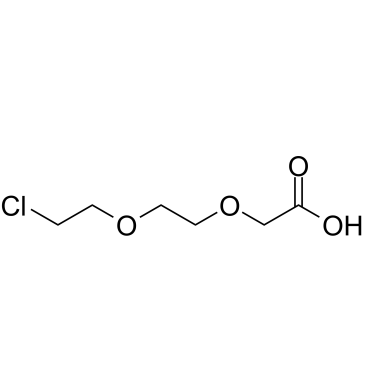Cl-PEG2-acid
Modify Date: 2025-09-24 21:39:34

Cl-PEG2-acid structure
|
Common Name | Cl-PEG2-acid | ||
|---|---|---|---|---|
| CAS Number | 170304-76-4 | Molecular Weight | 182.60 | |
| Density | N/A | Boiling Point | N/A | |
| Molecular Formula | C6H11ClO4 | Melting Point | N/A | |
| MSDS | N/A | Flash Point | N/A | |
Use of Cl-PEG2-acidCl-PEG2-acid is a PEG-based PROTAC linker that can be used in the synthesis of PROTACs[1]. |
| Name | Cl-PEG2-acid |
|---|---|
| Synonym | More Synonyms |
| Description | Cl-PEG2-acid is a PEG-based PROTAC linker that can be used in the synthesis of PROTACs[1]. |
|---|---|
| Related Catalog | |
| Target |
PEGs |
| In Vitro | PROTACs contain two different ligands connected by a linker; one is a ligand for an E3 ubiquitin ligase and the other is for the target protein. PROTACs exploit the intracellular ubiquitin-proteasome system to selectively degrade target proteins[1]. |
| References |
| Molecular Formula | C6H11ClO4 |
|---|---|
| Molecular Weight | 182.60 |
| Hazard Codes | Xi |
|---|
| MFCD20623441 |